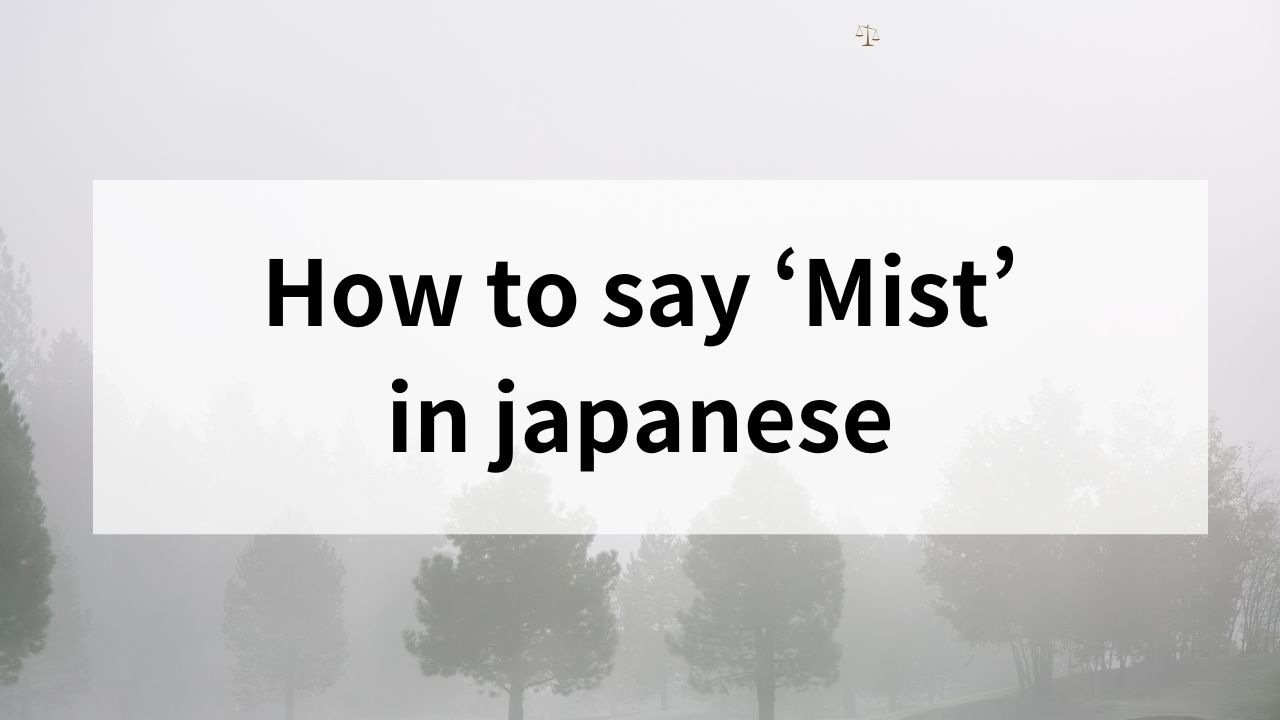Are you curious about how to say “mist” in Japanese? Whether you’re exploring Japanese literature, nature, or weather expressions, understanding this term can add depth to your vocabulary. In this guide, we’ll explore the Japanese word for “mist,” its variations, and practical ways to use it.
How to Say ‘Mist’ in Japanese
In Japanese, “mist” is most commonly expressed as Kiri (霧). This word is used to describe a fine, light fog often found in nature, such as in the mountains or forests.
For example, you might say, “Kiri ga deru” (霧が出る), which means “The mist is appearing.”
Variations of ‘Mist’ in Japanese
The concept of “mist” can vary slightly depending on the context in Japanese. Here are some common variations:
Dense Fog: Kasumi
Kasumi (霞) is another term related to mist or haze, often used poetically to describe a soft, dreamlike atmosphere.
Light Mist: Usukiri
Usukiri (薄霧) specifically refers to a light mist or thin fog, giving a gentle and serene feeling.
Morning Mist: Asakiri
Asakiri (朝霧) means “morning mist” and is often used to describe the mist that forms early in the day.
Practical Applications and Usage
Learning how to use “mist” in Japanese can enhance your ability to describe weather, scenery, or even emotions. Below are some examples:
Describing Weather
You can say, “Kyou wa kiri ga fukai” (今日は霧が深い), meaning “The mist is thick today.”
Expressing Emotions
In a poetic sense, “Kasumi” or “kiri” can be used metaphorically to describe unclear or hazy emotions, such as “Kokoro ga kiri no naka ni iru” (心が霧の中にいる), meaning “My heart is in the mist.”
Describing Scenic Beauty
When talking about beautiful scenery, you might say, “Kiri ni tsutsumareta yama” (霧に包まれた山), meaning “A mountain enveloped in mist.”
FAQs
Here are some common questions about the word “mist” in Japanese:
Is ‘Kiri’ used for fog as well?
Yes, “kiri” can also refer to fog, although there are specific terms for different types of fog, such as “noumu” (濃霧) for dense fog.
Are ‘Kiri’ and ‘Kasumi’ interchangeable?
Not always. “Kiri” is more general, while “Kasumi” is often used in poetic or aesthetic contexts.
Conclusion
Learning how to say “mist” in Japanese and understanding its variations like “kiri,” “kasumi,” and “usukiri” can help you describe weather, scenery, and emotions more vividly. Practice using these terms to deepen your appreciation for Japanese language and culture!








